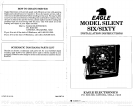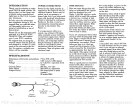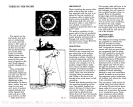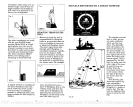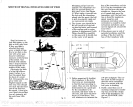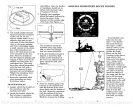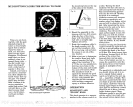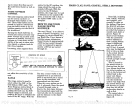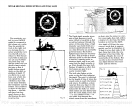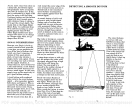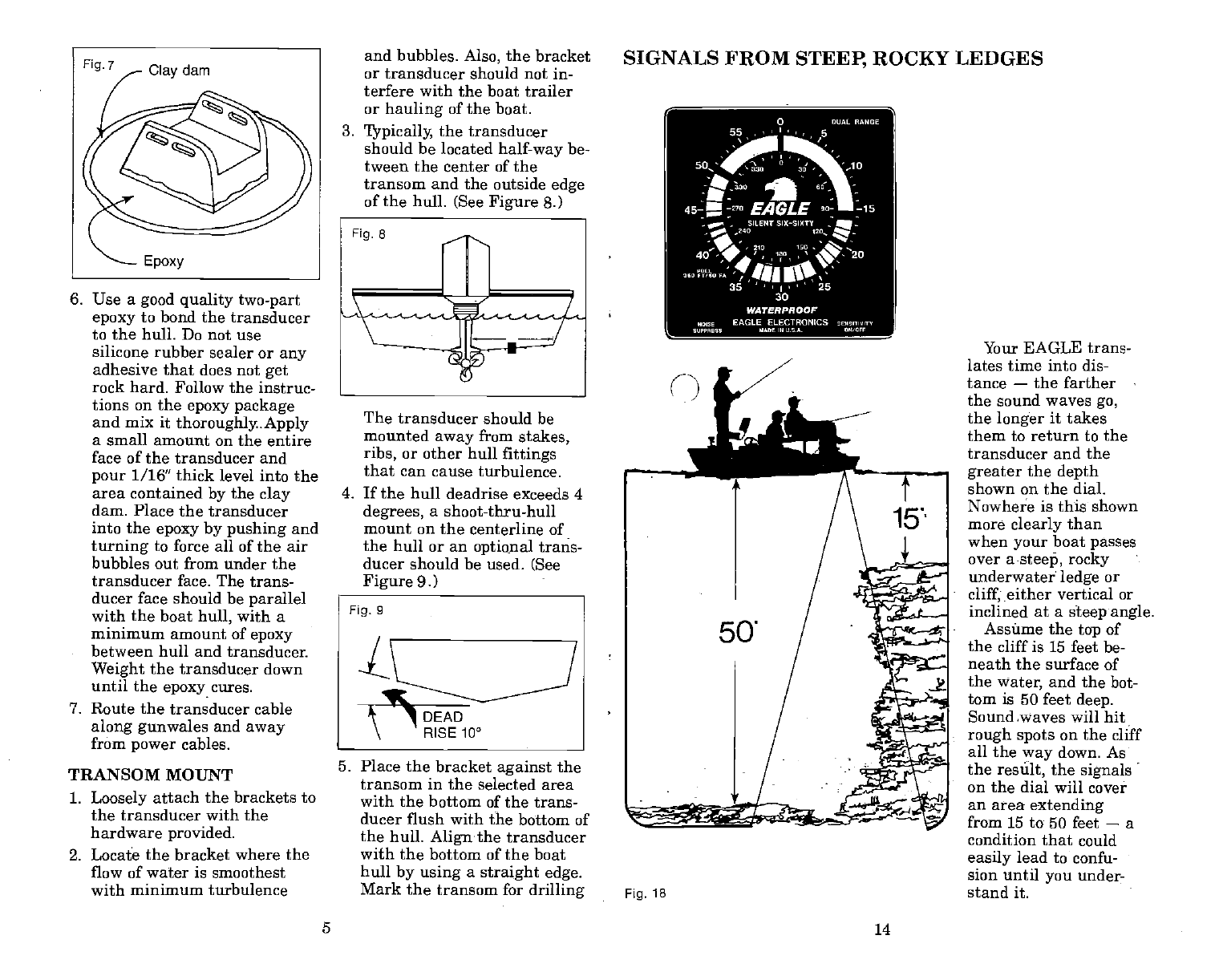
6. Use a
good quality two-part
epoxy
to bond the
transducer
to the hull. Do not use
silicone rubber sealer or
any
adhesive that does not
get
rock hard. Follow the instruc-
tions on
the
epoxy package
and mix
it
thoroughly.. Apply
a
small amount on the entire
face of the transducer and
pour
1/16" thick level into the
area
contained
by
the
clay
dam. Place the transducer
into the
epoxy
by
pushing
and
turning
to force all of the air
bubbles out
from under the
transducer face. The trans-
ducer face should be
parallel
with the boat
hull,
with a
minimum amount of
epoxy
between hull and
transducer.
Weight
the transducer
down
until the
epoxy
cures.
7. Route the transducer cable
along gunwales
and
away
from
power
cables.
TRANSOM MOUNT
1.
Loosely
attach the brackets to
the transducer with the
hardware
provided.
2. Locate the bracket where the
flow of water is smoothest
with minimum turbulence
and bubbles.
Also,
the
bracket
or transducer should not in-
terfere with the boat trailer
or
hauling
of the boat.
3.
1'ypically,
the transducer
should be located
half-way
be-
tween the center of the
transom and the outside
edge
of the hull.
(See
Figure
8.)
The transducer should be
mounted
away
from
stakes,
ribs,
or other hull
fittings
that
can cause turbulence.
4. If
the hull deadrise exceeds 4
degrees,
a shoot-thru-hull
mount on the centerline of
-
the hull or an
optiQnal
trans-
ducer should be used.
(See
Figure
9.)
5. Place the bracket
against
the
transom in the selected area
with the bottom of the trans-
ducer flush with the bottom of
the hull.
Alignthe
transducer
with the bottom of the boat
hull
by
using
a
straight edge.
Mark
the transom for
drilling
Your EAGLE trans-
lates time into dis-
tance
—
the farther
the sound waves
go,
the
longer
it takes
them to return to the
transducer and the
greater
the
depth
shown on the dial.
Nowhere is this shown
more
clearly
than
when
your
boat
passes
over a
steep,
rocky
underwater
ledge
or
cliff;
either vertical or
inclined at a
steep angle.
Assume the
top
of
the cliff is
15 feet be-
neath the surface of
the
water,
and the bot-
tom is 50 feet
deep.
Sound waves will
hit
rough spots
on the cliff
all the
way
down. As
the
result,
the
signals
on the dial will cover
an area
extending
from
15 to 50 feet
—
a
condition that could
easily
lead to confu-
sion until
you
under-
stand it.
5 14
Fig.
7
SIGNALS
FROM
STEEP,
ROCKY LEDGES
Fig.
9
Fig.
18
PDF compression, OCR, web-optimization with CVISION's PdfCompressor



